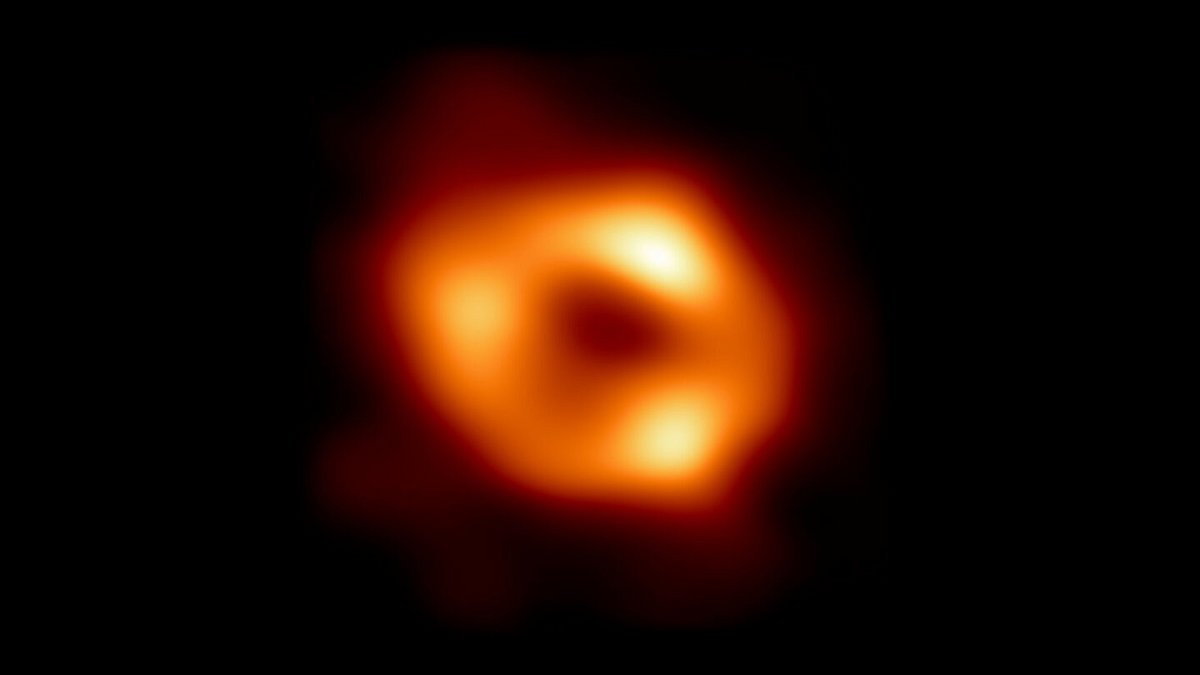New image reveals the ‘gentle giant’ at the heart of the Milky Way

This is the first image of Sagittarius A*
By Ashley Strickland, CNN
Whenever I travel, I always try to catch the sunrise. There is something about watching light spill over a new place, every aspect just waiting to be explored.
It reminds me of the concept in astronomy of first light, when a new telescope observes the universe for the first time.
The James Webb Space Telescope won’t begin capturing stunning, high-resolution views of the cosmos until this summer, but its initial test images are already revealing just how detailed our new perspective of the stars will be.
We will witness light that has traveled from the distant universe across billions of years, staring back into a point in time that has never been seen.
Perhaps the most exciting aspect is that we live in a time where amazing firsts happen frequently — and this week was filled with them. It’s enough to make you want to reach up for the sunrise.
Across the universe
We have finally looked into the heart of our galaxy and uncovered a “gentle giant.”
For the first time, astronomers captured an image of the supermassive black hole, called Sagittarius A*, at the center of the Milky Way.
The presence of an immense object at the galactic center has been suspected for years, but this is the only direct visual evidence.
The feat, achieved by more than 300 astronomers using a global network of eight telescopes, has been years in the making.
The unprecedented image could pave the way for documenting the true motion of black holes, which could change our understanding of these extreme cosmic objects.
Fossils and fireballs
An asteroid crashed into Earth 66 million years ago, ending the age of the dinosaurs. Now, researchers believe they have found a fragment of that space rock encased in amber.
Unearthed in the Hell Creek Formation in North Dakota, it’s one piece of the puzzle that re-creates that fateful day. Other clues include thousands of fossilized fish that breathed in debris and a leg from a dinosaur that may have witnessed the strike.
Together, these remarkable finds reconstruct the moments after the fatal blast when the asteroid created the Chicxulub impact crater off the coast of Mexico.
The discoveries have been shared in a new documentary featuring naturalist Sir David Attenborough and paleontologist Robert DePalma called “Dinosaur Apocalypse,” which aired this week on PBS.
Wild kingdom
Iran the Asiatic cheetah was found in a home by conservation researchers in 2017 when she was 8 months old, likely about to be smuggled by wildlife traffickers.
She was brought to the Asian Cheetah Breeding Center of the Turan Biosphere Reserve in Tehran — and now, Iran is the mother of three tiny cubs. One of the cubs died due to lung malformations, the center’s veterinarian said.
The births mark the first time this critically endangered species has reproduced in captivity, according to the Iranian Cheetah Society. These stunning animals once lived across Central Asia.
Now, the society says there are only about 12 left in the wild — which is why this newborn announcement is of such consequence.
Force of nature
When the undersea Hunga Tonga-Hunga Ha’apai volcano blasted on January 15, 40 miles (65 kilometers) north of Tonga’s capital, it created one of the most powerful eruptions on the planet.
The “unusually energetic” eruption, which has defied explanation, sent pressure waves rippling around the globe for six days. The Tonga eruption’s plume even stirred up hurricane-strength winds in space, according to NASA.
And speaking of planetary rumbles, NASA’s Mars InSight lander just detected the largest quake ever observed on the red planet — and scientists say it’s “the big one.”
Lunar update
Scientists were able to grow plants in lunar soil, using samples collected during the Apollo missions, in a landmark experiment.
It’s the first time a plant has been sprouted and grown on Earth in soil from another celestial body.
But the seedlings showed signs of stress as they struggled to adapt to the antagonistic alien soil, turning different colors and showing slow development and stunted growth.
Researchers remain encouraged that the plants grew in the extraterrestrial soil at all — and this success could pave the way for lunar greenhouses that support colonies on the moon in the future.
And keep your eye on the sky this weekend to see a lunar eclipse. Here’s everything you need to know about how and when to watch.
Discoveries
You never know what you’ll find:
— Why do sleeping dogs look like they’re running? Experts have shared the science behind what really happens when your pup slumbers.
— China’s Zhurong rover has found evidence suggesting that water persisted on Mars for much longer than expected — and the surprising find was right under its wheels.
— Archaeologists excavated a subterranean Iron Age complex beneath a home in Turkey and found rare, ancient artwork of deities on the wall.
Like what you’ve read? Oh, but there’s more. Sign up here to receive in your inbox the next edition of Wonder Theory, brought to you by CNN Space and Science writer Ashley Strickland, who finds wonder in planets beyond our solar system and discoveries from the ancient world.
The-CNN-Wire
™ & © 2022 Cable News Network, Inc., a WarnerMedia Company. All rights reserved.